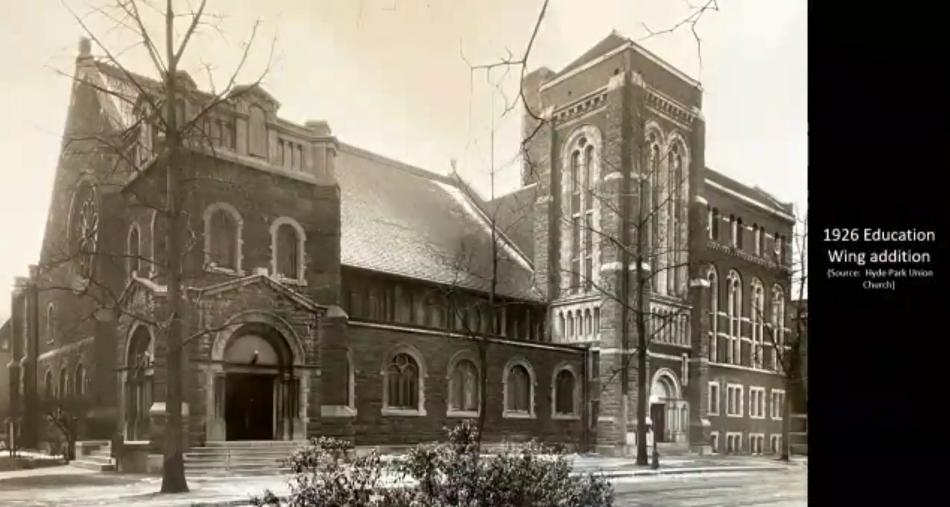The Chicago Metropolis Council has permitted a landmark designation for Hyde Park Union Church. Positioned at 5600 S. Woodlawn, the church was in-built 1906 by architect James Gamble Rogers, with an addition in-built 1926 by architects Morison and Wallace.
Assembly Criterion 1 for its heritage, the historical past of Hyde Park Union Church goes way back to 1874 when the First Baptist Church of Hyde Park Congregation’s first house was a wood-framed construction on the nook of 54th and Dorchester. The unique church constructing was demolished in preparation for the development of a brand new church, and two tons to the west have been bought to assemble the bigger two-story Richardsonian Romanesque-style church.
Hyde Park Union ChurchCCL
The church additionally meets Criterion 4 for its exemplary structure. Traits of the Richardsonian Romanesque model seen on the constructing embody rusticated purple stone partitions and nook towers. The Inside of the sanctuary is designed as a grand house for worship, with 6 massive heavy timber open trusses with herringbone patterned ceilings in between. Stained glass home windows and a rose window have been added over time.

Hyde Park Union ChurchCCL
The church additionally meets Criterion 5 as a piece of a big architect or designer. James Gamble Rogers was a prolific architect who accomplished a mix of residential and institutional buildings similar to Harkness Tower at Yale College, Northwestern College Chicago Campus, and Blaine Corridor on the College of Chicago.

Hyde Park Union ChurchCCL
It was additionally decided that Hyde Park Union Church meets the Integrity Criterion because it has maintained its historic character over the previous a number of many years and has solely undergone minor adjustments which can be typical for buildings of its age. This included some in-kind substitute of clay roof tiles.

Hyde Park Union ChurchCCL
With the landmark designation permitted, the constructing can’t be demolished. The protected options will embody all exterior elevations and rooflines in addition to the doorway on the vestibule and sanctuary, together with the general spatial quantity and historic ornamental finishes and options.
“Well bless their hearts.”











